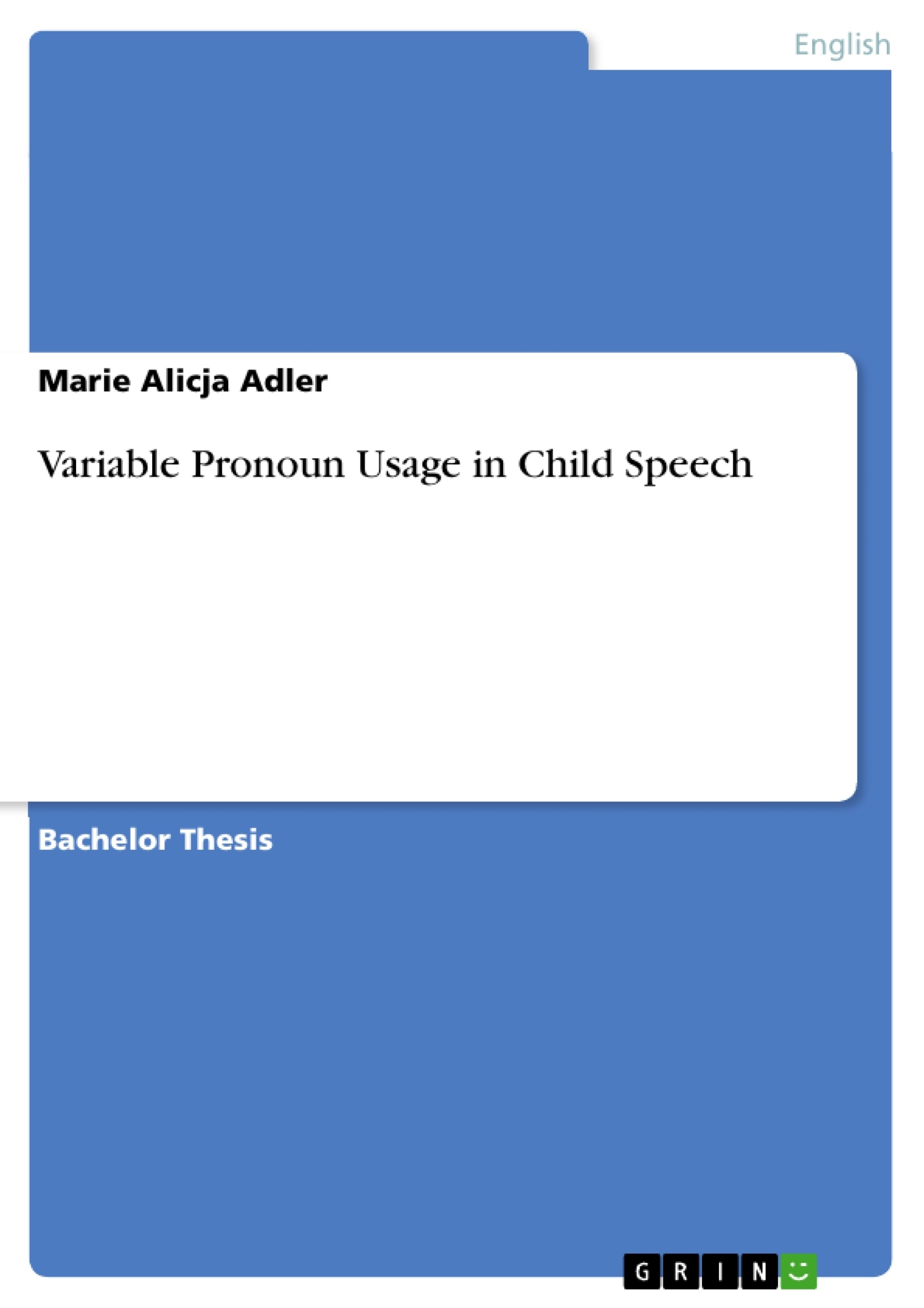The present study investigated children’s pronoun usage in reference to animals of unknown sex. It was found that different factors that lie in the nature and behavior of the antecedents influence the choice between masculine he, feminine she and neuter it. Moreover, it could be shown that children’s use of the masculine pronoun he is disproportionally more frequent than their use of feminine she and neuter it. These results support the animal=male hypothesis framed by Lambdin et al. (Lambdin et al, 2003).
Inhaltsverzeichnis (Table of Contents)
- Introduction
- English Pronouns
- The Pronominal System of Modern Standard English
- Pronouns in Reference to Animals in Modern Standard English
- Possible Influences on the Choice of Pronouns
- Generic Reference vs. Specific Reference
- Animal-like Behavior vs. Personification
- Passive Object vs. Active Agent
- Gender-neutral Behavior vs. Maternal Behavior
- The Hierarchy of Individuation
- Methodology
- Material
- Picture Story: Generic Reference vs. Specific Reference
- Picture Story: Animal-like Behavior vs. Personification
- Picture Story: Passive Object vs. Active Agent
- Picture Story: Gender-neutral Behavior vs. Maternal Behavior
- Procedure
- Material
- Results
- Discussion
- Pronoun Switches Induced by the Set Triggers
- The Choice of Gender-specific Pronouns over Neuter it
- The Choice of Masculine he over Feminine she and Neuter it
Zielsetzung und Themenschwerpunkte (Objectives and Key Themes)
This study investigates children’s pronoun usage in reference to animals of unknown sex, aiming to demonstrate that pronoun choice is not simply based on grammatical agreement, but influenced by various factors related to the nature and behavior of the antecedents. The study focuses on the influence of different factors on the choice between masculine, feminine, and neuter pronouns.
- The impact of specific versus generic reference on pronoun choice.
- The influence of personification and animal-like behavior on pronoun usage.
- The role of an animal's passivity or activity as an agent in determining pronoun selection.
- The effect of maternal behavior on pronoun choice in reference to animals.
- The presence of a possible animal=male bias in children's language.
Zusammenfassung der Kapitel (Chapter Summaries)
The paper begins by outlining the pronominal system of Modern Standard English, including the role of humanness, animacy, and gender in pronoun selection. The authors then introduce the specific factors that will be tested in the study, focusing on the influence of different characteristics and behaviors of animals on pronoun choice.
The methodology chapter details the design of the experiment using picture stories featuring four different animals: a rabbit, a cat, a dog, and a kangaroo. Each story incorporates a change in the animal's characteristics or behavior, designed to trigger a shift in pronoun usage.
The results section presents the data gathered from the interviews with children aged four to seven years. It analyzes the frequency of masculine, feminine, and neuter pronouns used by the children in reference to the animals in each picture story.
The discussion chapter examines the effect of the different triggers on pronoun selection. The authors analyze the occurrence of pronoun switches, highlighting the influence of specific versus generic reference, personification, passivity versus activity, and maternal behavior on the children's pronoun choices. The discussion also explores the reasons for the significantly higher use of masculine pronouns compared to feminine and neuter pronouns.
Schlüsselwörter (Keywords)
The study focuses on the use of pronouns, particularly he, she, and it, in reference to animals of unknown sex. It investigates the influence of factors such as generic reference, personification, passive object vs. active agent, gender-neutral behavior, maternal behavior, and the hierarchy of individuation. The study also explores the animal=male hypothesis and its role in children's language development.
- Citar trabajo
- Marie Alicja Adler (Autor), 2012, Variable Pronoun Usage in Child Speech, Múnich, GRIN Verlag, https://www.grin.com/document/207163



